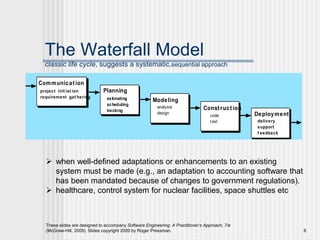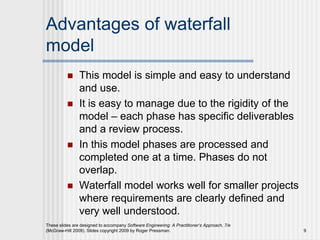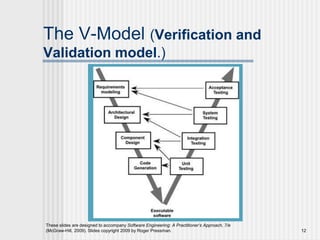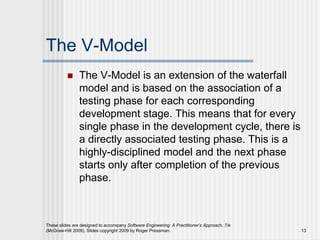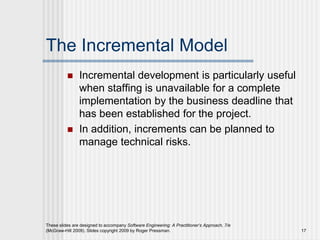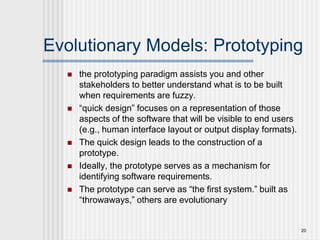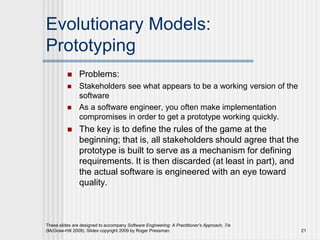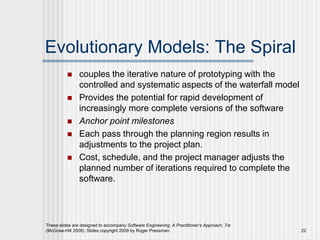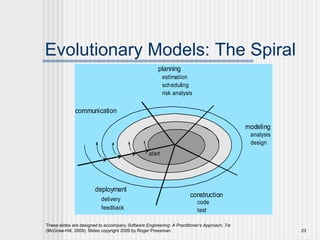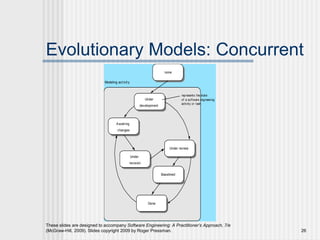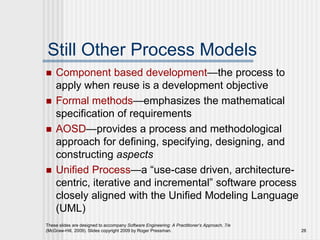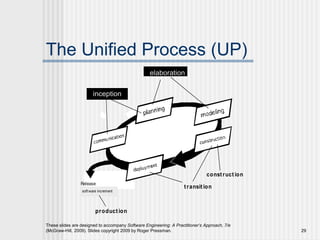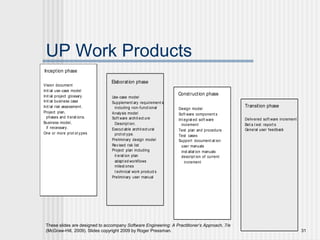The document contains slides from a lecture on software engineering process models. It discusses the waterfall model, V-model, incremental model and evolutionary models. The waterfall model follows sequential phases from requirements to maintenance without overlap. The V-model pairs each development phase with a testing phase. The incremental model combines linear and parallel activities to deliver software in increments. Evolutionary models take an iterative approach where software evolves over time through incremental improvements.


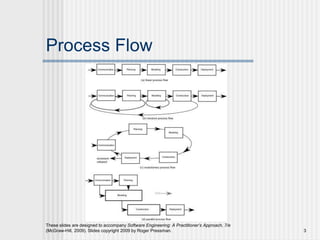


![These slides are designed to accompany Software Engineering: A Practitioner’s Approach, 7/e
(McGraw-Hill, 2009). Slides copyright 2009 by Roger Pressman. 6
Process Assessment and Improvement
Standard CMMI Assessment Method for Process Improvement
(SCAMPI) — provides a five step process assessment model that
incorporates five phases: initiating, diagnosing, establishing, acting and
learning.
CMM-Based Appraisal for Internal Process Improvement (CBA
IPI)—provides a diagnostic technique for assessing the relative
maturity of a software organization; uses the SEI CMM as the basis for
the assessment [Dun01]
SPICE—The SPICE (ISO/IEC15504) standard defines a set of
requirements for software process assessment. The intent of the
standard is to assist organizations in developing an objective
evaluation of the efficacy of any defined software process. [ISO08]
ISO 9001:2000 for Software—a generic standard that applies to any
organization that wants to improve the overall quality of the products,
systems, or services that it provides. Therefore, the standard is directly
applicable to software organizations and companies. [Ant06]](https://image.slidesharecdn.com/selec2-200314174024/85/SE-CHAPTER-2-PROCESS-MODELS-6-320.jpg)

